Britten-Norman BN-2 Islander
The Britten-Norman BN-2 Islander is a British light utility aircraft and regional airliner designed and originally manufactured by Britten-Norman of the United Kingdom. Still in production, the Islander is one of the best-selling commercial aircraft types produced in Europe. Although designed in the 1960s, over 750 are still in service with commercial operators around the world. The aircraft is also used by the British Army and police forces in the United Kingdom and is a light transport with over 30 military aviation operators around the world.
| Islander | |
|---|---|
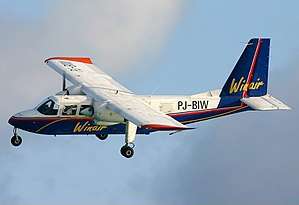 | |
| A Winair Britten-Norman BN-2 Islander | |
| Role | Utility aircraft/airliner |
| Manufacturer | Britten-Norman |
| Designer | John Britten, Desmond Norman |
| First flight | 13 June 1965 |
| Status | Active service |
| Produced | 1965–present |
| Number built | 1,280 |
| Unit cost | |
| Variants | Britten-Norman Defender |
| Developed into | Britten-Norman Trislander |
Initial aircraft were manufactured at Britten-Norman's factory in Bembridge, Isle of Wight, UK. After Fairey Aviation acquired the Britten-Norman company, its Islanders and Trislander aircraft were built in Romania, then shipped to Avions Fairey in Belgium for finishing before being flown to the UK for flight certification. The Islander has been in production for more than 50 years.
Development
Origins
In 1953, Britten-Norman was formed for the purpose of converting and operating agricultural aircraft, amongst other vehicles such as the Cushioncraft hovercraft.[3][4] In 1963, the firm initiated development work upon what would become the Islander, having sensed a demand for a single and inexpensive twin-piston engine aircraft.[5] The founders, John Britten[6] and Desmond Norman, had observed the rapid growth of the commuter airline sector, and concluded that capacity was of a higher value to these operators than either range or cruising speed, thus the Islander emphasized payload over either of these attributes.[4]
Through the use of low wing- and span-loading to generate greater effectiveness than conventional counterparts, the Islander could lift considerably heavier payloads than the typical aircraft in its power, weight or cost classes.[7] To reduce manufacturing costs, both the wings and tail surfaces maintain a constant chord and thickness, while the ribs within the aircraft's wing are all identical; both rivets and external fishplate joints are used for the same purpose.[8] The type was originally intended to use a fabric-and-steel design. A light alloy monocoque approach was adopted instead.[5] The structure is designed to give rise to and experience low levels of stress, and has an infinite fatigue life without testing.[8]

On 13 June 1965, the first prototype BN-2 Islander conducted its maiden flight, powered by a pair of Rolls-Royce/Continental IO-360B piston engines; only four days later, the prototype appeared at the Paris Air Show.[5][9] The IO-360B engines were later replaced by more powerful Lycoming O-540-E engines, which were located further outboard on the wings, for superior single-engine climb performance.[5] On 20 August 1966, a second BN-2 prototype performed its first flight. These prototype aircraft, while resembling subsequent production models for the most part, were outfitted with different, less powerful engines.[10] On 24 April 1967, the first production Islander performed its first flight; UK type certification was received in August 1967, US authorities also certified the type in December 1967.[5]
Initial production of the Islander started at the Britten-Norman factory at Bembridge on the Isle of Wight; however, within a few years the company found that it could not produce the aircraft at a sufficient rate to keep up with the customer demand.[3][11] To expand production, a contract was placed with Intreprinderea de Reparatii Material Aeronautic (IRMA) of Romania, initially to assemble kit-form aircraft, which were then sent to the UK for completion. In August 1969, the first Romanian-assembled Islander performed its first flight.[5] IRMA proved successful at economically producing the aircraft, producing roughly 30-40 aircraft per year at times, and eventually became the primary manufacturing site for the Islander.[3][5] In 1977, IRMA received a contract for the production of a further 100 Islanders; from that point on, the firm produced all subsequent Islander aircraft.[5][12] More than 500 of the type were manufactured in Romania.[13]
In 1970, a military version of the Islander, marketed as the Defender, conducted its first flight. Modifications included the addition of underwing hardpoints for armaments/equipment, and the main cabin area being fitted out for light troop transport and support aircraft duties.[5] The Defender capitalised on the aircraft's rugged structure, making it suitable for long-term operations in developing countries. Purchases from police and military customers have typically been for use in surveillance and counter-terrorism operations. The Maritime Defender is another military version of the Islander, intended for search and rescue, coastal patrol and fishery protection.
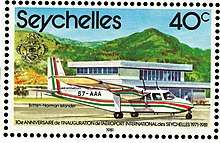
Further development
Despite the relative success of the Islander, Britten-Norman experienced wider financial difficulties during the late 1960s, ultimately resulting in the company entering receivership in October 1971.[5] In August 1972, Britten-Norman was purchased by the Fairey Aviation Group, forming the Fairey Britten-Norman company; shortly thereafter, the majority of manufacturing activity for both the Islander and Trislander was transferred to its Avions Fairey factory in Gosselies, Belgium. Completed aircraft were flown to Bembridge for final customer preparation prior to delivery.[3][14][15]
.jpg)
Fairey Aviation set about the development of a more powerful model, the Turbo Islander, equipped with a pair of Lycoming LTP101 turboprop engines. However, testing revealed that the LTP101 engines were too powerful for the aircraft; thus, following a period of re-designing, the project evolved into the Turbine Islander (BN-2T), equipped with a pair of Allison 250 turboprop engines instead.[3] However, Fairey itself encountered financial difficulty, resulting in the Fairey Britten-Norman company entering receivership and the firm's acquisition by Oerlikon Buerle of Switzerland, leading to the formation of Pilatus Britten-Norman, at which point some production activity was transferred back to Bembridge.[3][5]
Another development was a turbo-normalizing system with RaJay turbocharger for the -2, -3, -6, -8, and -9 models allowing full power up to 14,000 feet with attendant increase in true airspeed and takeoff and climb performance. Presently Talco in Texas holds the STC.
In 1969, an improved version, the BN-2A Islander, conducted its maiden flight. It incorporated aerodynamic and flight equipment improvements, such as lower-drag engine cowlings and undercarriage, an improved interior, and an expanded rear baggage area with external access.[5] In 1970, to improve hot-and-high performance, more powerful Lycoming O-540-K1-B5 engines were made available, alongside optional tiptanks and an elongated nose to house baggage.[5]
_AN2059491.jpg)
In 1977, a single standard BN-2 was re-engined with Dowty Rotol ducted fans. The ducted fan produced less noise than conventional propeller propulsion. Some structural strengthening of the main wing spar at the root was required due to the extra weight.[16] This aircraft was subject to 18 months of flying trials to test the suitability of the ducted fan as a means of reducing aircraft noise; these tests reportedly demonstrated a 20 decibel noise reduction as well as increased thrust and reduced pollution.[5][17]
In 1978, a further improved version, the BN-2B Islander II, was produced as a result of a product improvement program. The BN-2B model involved several changes, including a redesigned cockpit and a reduction in cabin noise levels.[5] In 1980, it was decided to make available turboprop engines for the type, adopting twin Allison 250-B17C engines; when the latter are installed, the aircraft is designated the BN-2T Turbine Islander. The first such BN-2T entered service in 1981.[5]
In February 1999, the acquisition of Romaero, the Romanian manufacturer of the Islander, by Britten-Norman Group was announced.[18][19] By May 2006, a greater sales emphasis was being placed upon the Defender over the Islander.[20] In December 2006, aerospace publication Flight International observed that: "The only civil aircraft that remains in production in the UK is the tiny Britten-Norman Islander".[21] In May 2010, Britten-Norman announced that manufacturing of the Islander would be relocated from Romania to a new site in the UK, due to the rising costs of production in Romania.[22]
Electric Project Fresson
Supported by Britten-Norman, Cranfield Aerospace wants to develop an electric propulsion system for the over 700 Islanders currently operated.[23]
Trislander
In 1968, the original second Islander prototype was re-used for a further development programme, being modified into a stretched aircraft with greater capacity, referred to as the Super Islander. However, the Super Islander programme was aborted without proceeding to certification.[5] The prototype later received further design changes to produce the three-engined version, the BN-2A Mk III Trislander.[3] This aircraft has a stretched fuselage, modified landing gear and a third engine, which is mounted on the tail.[5] On 11 September 1970, the Trislander prototype conducted its maiden flight, appearing at the 1970 Farnborough Air Show the same day.[5]
Design

The Britten-Norman BN-2 Islander is a high-wing cantilever monoplane with a rectangular fuselage and two wing-mounted engines; early aircraft were equipped with a pair of piston engines while later production models may be alternatively fitted with turboprop engines in their place.[5][10][24] The rectangular cross section fuselage, which is furnished with a conventional tail unit and fixed tricycle landing gear, typically accommodates a single pilot and up to nine passengers in a commuter configuration, each row being accessed by its own door; the cabin can be rapidly reconfigured, allowing for a single aircraft to undertake a diverse range of tasks within a minimal period of time.[10][25] Often referring to the type as "The world's most versatile aircraft",[24] Britten-Norman promotes the Islander's low direct operating costs, minimal maintenance, and its stability in flight as major attributes of the aircraft.[25]
The original Islander was designed with an emphasis upon providing ease of access within the short haul sector to remote locations as a safe, efficient, and profitable transport aircraft.[24] It has been regularly used by such operators, including the frequent use of unprepared rough airstrips and from challenging terrain; the Islander being capable of short takeoff and landing (STOL) operations.[24] The low load height and wide side doors provide for easy access for passenger and cargo operations, while the aircraft's ability to maintain a high takeoff frequency has led to the type's use for parachuting.[24] For operating within noise-sensitive environments, silencers can be equipped on both the aircraft's engine and propellers.[26]
_aircraft_in_a_parachuting_exercise_in_Estonia_(5675975348).png)
Designed as a small and inexpensive commuter/utility aircraft, various cabin configurations and equipment loadouts are available to suit a wide variety of different purposes, including charter flights, scheduled flights, agricultural uses, aerial firefighting, air freight VIP/executive transport, aerial surveillance, air ambulance, paradropping, and law enforcement.[5][24] The design programme can be entirely personalized, allowing each customer to be involved in every area of the aircraft's manufacture to mold it to their preferences.[25] Later versions of the Islander offer various options, including enlarged bay doors, 3-bladed scimitar propellers, low drag fairings, modern interior, ergonomic leather seating, in-flight entertainment systems, and alternative seat arrangements; underwing hardpoints can also be installed for carrying pod, spray booms and other external stores.[24][25]
Operational history
Immediately following commercial availability, US distributor Jonas Aircraft ordered 30 Islanders, and placed orders for another 112 aircraft within a year.[5][8] When equipped with four 54-gallon fuel tanks, the Islander was able to ferry itself across the transatlantic route, via Gander International Airport, Newfoundland, for US deliveries.[5] The Islander's long-range capabilities were highlighted when the type won the 1969 London-Sydney air race.[5]
In 1974, sales of the Islander surpassed the 548-order record for British multi-engine commercial aircraft.[5] In 1982, another production milestone was reached with the delivery of the 1,000th Islander.[5] From the 1980s onwards, sales noticeably declined; according to Britten-Norman Chief Executive William Hynett, this was due to the global market having become saturated by the type and there being only a low civil demand for additional aircraft, in part due to the longevity of in-service Islanders.[20] As of 2016, Britten-Norman claim that the Islander is in daily service with roughly 500 operators in more than 120 countries.[24]
Between 1976 and 2006, Scottish airline Loganair operated a number of Islanders as air ambulances, covering areas such as the island communities in the Hebrides.[27] The Islander services Loganair's Westray to Papa Westray flight, the shortest scheduled flight in the world at 1.7 mi (2.7 km); the scheduled flight time including taxiing is two minutes.[28][29][30]
Several commuter airlines and general aviation charter operators in the U.S. also flew the Islander including Stol Air Commuter in scheduled passenger service in northern California from their San Francisco International Airport (SFO) hub and Channel Islands Aviation in southern California which used the aircraft for the flights to Channel Islands National Park.[31][32] Another U.S. commuter airline operator was Wings Airways which operated high frequency shuttle service into the Philadelphia International Airport (PHL).[33]
By October 2019, 800 Islanders were in service including around 600 used for short flights.[34]
Variants
Source:[35]
- BN-2
- Prototype first flown in 1966 with two 260 hp Lycoming O-540-E4B5 piston engines.
- BN-2A
- Production version with minor modification from prototype and increased takeoff weight.
- BN-2A-2
- A BN-2A with modified flaps, and two 300 hp Lycoming IO-540-K1B5 (fuel injected) engines.
- BN-2A-3
- A BN-2A-2 with increased wingspan and fitted with extra wingtip fuel tanks.
- BN-2A-6
- A BN-2A with wing leading edge modifications and two 260 hp Lycoming O-540-E4C5 engine.
- BN-2A-7
- A BN-2A-6 with increased wingspan and fuel capacity.
- BN-2A-8
- A BN-2A-6 with droop flaps.
- BN-2A-9
- A BN-2A-7 with droop flaps.
- BN-2A-10
- A BN-2A-8 with increased takeoff weight and 270 hp Lycoming TIO-540-H1A (turbo-charged, fuel injected) engines.
- BN-2A-20
- A BN-2A-2 with increased takeoff weight and minor improvements.
- BN-2A-21
- A BN-2A-3 with increased takeoff weight.
- BN-2A-23
- A BN-2A-21 with lengthened nose.
- BN-2A-24
- A BN-2A-26 with lengthened nose.
- BN-2A-25
- A BN-2A-27 with lengthened nose.
- BN-2A-26
- A BN-2A-8 with increased takeoff weight.
- BN-2A-27
- A BN-2A-9 with increased takeoff weight.
- BN-2A-30
- A BN-2A-20 fitted with floats. Twin floats were attached to the undercarriage legs and incorporated retractable landing gear.
- BN-2A-41
- Turbo Islander with lengthened nose, droop flaps and two Lycoming LTP-101 turboprops, first flown in 1977.

- Defender military variant with 300 hp IO-540-K1B5 engines and underwing hard points and military modifications.
- BN-2B-20
- A BN-2A-20 with improved soundproofing and increased landing weight and other minor modifications.
- BN-2B-21
- A BN-2A-21 with Model B improvements.
- BN-2B-26
- A BN-2A-26 with Model B improvements.
- BN-2B-27
- A BN-2A-27 with Model B improvements.
- BN-2T
- Turbine Islander based on BN-2A-26 with two 320 shp Allison 250-B17C turboprops. Seating for up to 9 passengers.
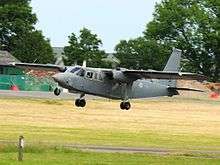
- Islander AL1
- Variant of the BN-2T for communications and reconnaissance duties with the British Army; seven built. Used for aerial reconnaissance and photography in Northern Ireland during Operation Banner by No. 1 Flight, Army Air Corps based at Aldergrove.[36] Redesignated Islander R1 in 2019 after being transferred to the Royal Air Force.[37]
- Islander CC2 and CC2A
- Variant of the BN-2T for the Royal Air Force; three operated.[38][39][40] These aircraft were retired from the RAF in 2017.[41]
- Maritime-Defender
- Armed maritime reconnaissance and patrol aircraft.
- BN-2A-III Trislander
- Three-engined Trislander, a stretched BN-2A with 18 seats and three 260 hp Lycoming O-540-E4C5 piston engines.
Operators



.svg.png)
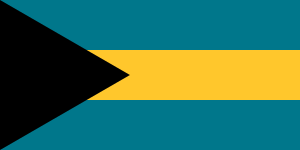
.svg.png)
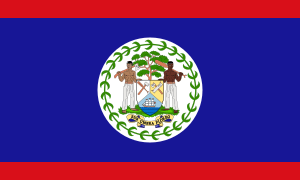
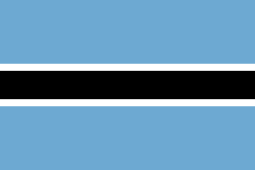

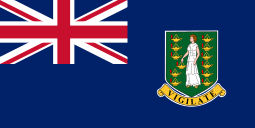


.svg.png)
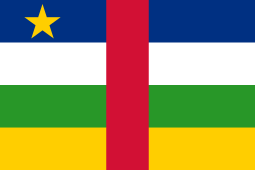

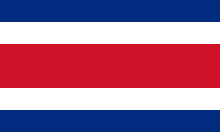







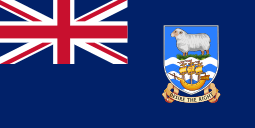
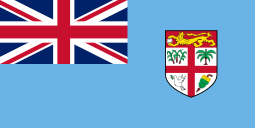


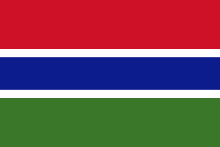



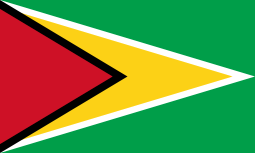

.svg.png)
.svg.png)







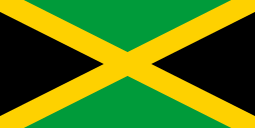


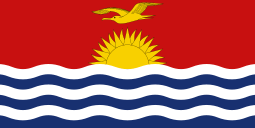
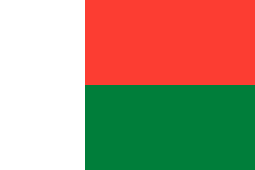

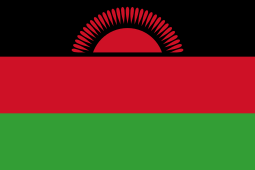



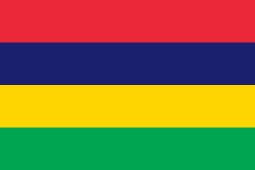



.svg.png)







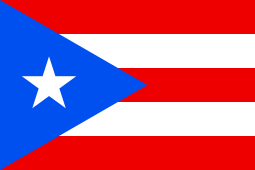

.svg.png)



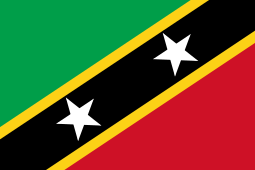





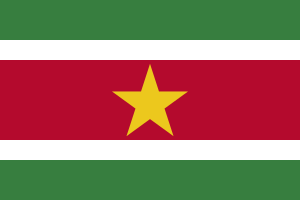






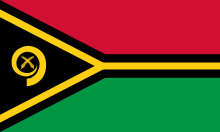

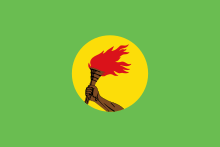


Accidents
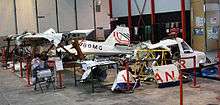
- 1996 Loganair Islander accident
- 2005 Loganair Islander accident
- 2005 L.A.B. Flying Service accident
- 2014 Romania Britten-Norman Islander crash
- 2016 Sunbird Aviation crash
Specifications (BN-2B Islander)

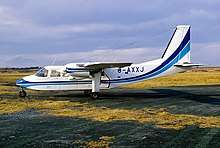
_(8325582557).jpg)
.jpg)
Data from Jane's All the World's Aircraft 1988-89[42]
General characteristics
- Crew: 1 or 2
- Capacity: up to 9 passengers / 2,048 lb (929 kg) maximum payload
- Length: 35 ft 7.75 in (10.8649 m)
- Wingspan: 49 ft 0 in (14.94 m)
- Height: 134 ft 8.75 in (41.0655 m)
- Wing area: 325 sq ft (30.2 m2)
- Aspect ratio: 7.4
- Airfoil: NACA 23012[43]-->
- Empty weight: 4,114 lb (1,866 kg) equipped (without avionics)
- Maximum zero-fuel weight: 6,300 lb (2,858 kg)
- Max takeoff weight: 6,600 lb (2,994 kg)
- Fuel capacity:
- 114 imp gal (137 US gal; 518 l) / 780 lb (354 kg) standard
- 188 imp gal (226 US gal; 855 l) / 1,290 lb (585 kg) with optional wing-tip tanks
- 288 imp gal (346 US gal; 1,309 l) with wing-tip tanks and optional under wing tanks
- Powerplant: 2 × Lycoming O-540-E4C5 6-cylinder air-cooled horizontally-opposed piston engines, 260 hp (190 kW) each
- or 300 hp (224 kW) Lycoming IO-540-K1B5 as a customer option
- Rajay turbo-chargers, optional.
- Propellers: 2-bladed Hartzell HC-C2YK-2B, 6 ft 2.7 in (1.898 m) diameter constant-speed feathering propellers
Performance
- Maximum speed: 148 kn (170 mph, 274 km/h) at sea level
- Cruise speed:
- 139 kn (160 mph; 257 km/h) at 7,000 ft (2,134 m) (75% power)
- 134 kn (154 mph; 248 km/h) at 9,000 ft (2,743 m) (67% power)
- 130 kn (150 mph; 241 km/h) at 12,000 ft (3,658 m) (59% power)
- Stall speed:
- 50 kn (58 mph; 93 km/h) flaps up
- 40 kn (46 mph; 74 km/h) flaps down
- Never exceed speed: 183 kn (211 mph, 339 km/h)
- Range: 755 nmi (869 mi, 1,398 km) at 130 kn (150 mph; 241 km/h) at 12,000 ft (3,658 m) (59% power) standard fuel
- Ferry range: 1,216 nmi (1,399 mi, 2,252 km) at 130 kn (150 mph; 241 km/h) at 12,000 ft (3,658 m) (59% power) (optional maximum fuel)
- Service ceiling: 11,300 ft (3,400 m)
- Service ceiling: 5,000 ft (1,524 m) on one engine
- Absolute ceiling: 13,600 ft (4,145 m)
- Rate of climb:
- 860 ft/min (4.37 m/s) at sea level
- 200 ft/min (1.02 m/s) on one engine
- Wing loading: 20.3 lb/sq ft (99 kg/m2)
- Fuel consumption:
- Power/mass: 0.0787 hp/lb (0.1294 kW/kg)
- Take-off run: 913 ft (278 m) at sea level, zero wind, hard runway
- Take-off run: 1,299 ft (396 m) at 5,000 ft (1,524 m) with zero wind, hard runway
- Take-off to 50 ft (15 m): 1,732 ft (528 m) at 5,000 ft (1,524 m) with zero wind, hard runway
- Landing run: 460 ft (140 m) at sea level, zero wind, hard runway
- Landing run: 560 ft (171 m) at 5,000 ft (1,524 m), zero wind, hard runway
- Landing distance from 50 ft (15 m): 980 ft (299 m) at sea level, zero wind, hard runway
- Landing distance from 50 ft (15 m): 1,170 ft (357 m) at 5,000 ft (1,524 m), zero wind, hard runway
Avionics
Blind flying instruments plus customer specified avionics
See also
Related development
Aircraft of comparable role, configuration and era
- Aero Commander 500 family
- Cessna 402
- Cessna 208 Caravan
- Dornier Do 28
- GippsAero GA8 Airvan
- Piper PA-31 Navajo
- Tecnam P2012 Traveller
References
Citations
- Fricker 1968, p. 77.
- "B-N Group Turbine Islander". Forecast International. October 2013. Archived from the original on 12 October 2017. Retrieved 12 October 2017.
- Simpson 1991, p. 77.
- Fricker 1968, p. 75.
- Goold, Ian. "Britten-Norman Islander celebrates 40th anniversary." Archived 15 September 2017 at the Wayback Machine AIN Online, 16 October 2006.
- "John Britten obituary" (PDF). Archived (PDF) from the original on 17 April 2017. Retrieved 16 April 2017.
- Fricker 1968, pp. 75-76.
- Fricker 1968, p. 76.
- Green 1976, p. 52.
- Orbis 1985, p. 992.
- Fricker, John. "Foreign Accent." Archived 11 April 2016 at the Wayback Machine Flying, December 1968. Vol. 83, No. 6. ISSN 0015-4806. p. 26.
- Hamilton-Paterson 2010, p. 255.
- "Romaero". Romaero. Archived from the original on 30 June 2012. Retrieved 20 August 2012.
- "Avions Fairey Gosselies & Sonaca: a Tips of genie." Archived 20 June 2010 at the Wayback Machine Belgian Aircraft History Association, Retrieved: 25 March 2016.
- Fricker, John. "Past and Present." Archived 11 April 2016 at the Wayback Machine Flying Magazine, September 1977. Vol. 101, No. 3. ISSN 0015-4806. p. 271.
- Hirst, Mike. "Building the quiet Islander." Archived 7 April 2016 at the Wayback Machine Flight International, 16 July 1977. p. 210.
- "Reporting Points." Archived 11 April 2016 at the Wayback Machine Flying Magazine, October 1977. ISSN 0015-4806. p. 25.
- "Britten-Norman takes over Romania's Romaero." Archived 8 April 2016 at the Wayback Machine Aviation Week, 8 February 1999.
- "Britten-Norman enjoys new Romanian rhapsody." Archived 7 April 2016 at the Wayback Machine Flight International, 14 June 1999.
- Morrison, Murdo. "Great Britten." Archived 7 April 2016 at the Wayback Machine Flight International, 20 June 2006.
- Kingsley-Jones, Max. "Final landing: A history of the UK aircraft industry (or 'Why Britain botched building airliners')." Archived 7 April 2016 at the Wayback Machine Flight International, 22 December 2006.
- Morrison, Murdo. "Britten-Norman brings production back to the UK." Archived 7 April 2016 at the Wayback Machine Flight International, 28 May 2010.
- Tony Osborne (26 October 2018). "Loganair Visions Electric Island-Hopping Flight First". Aviation Week & Space Technology.
- "Islands: The World's Most Versatile Aircraft." Archived 6 April 2016 at the Wayback Machine Britten Norman, Retrieved: 25 March 2016.
- "Islander." Archived 21 July 2012 at the Wayback Machine Britten Norman, Retrieved: 25 March 2016.
- "Pilatus Britten-Norman will adopt Islander silencer." Archived 7 April 2016 at the Wayback Machine Flight International, 7 January 1998.
- Lowton, Edward. "“At what altitude did you have your baby?” National Museum of Flight seeks mothers who gave birth midflight." Archived 7 April 2016 at the Wayback Machine Culture 24, 16 June 2015.
- "Getting here is easy, by sea or air." Westray and Papa Westray, Retrieved: 25 March 2016.
- "Final trip for Orkney shortest flight pilot." Archived 4 May 2018 at the Wayback Machine BBC News, 23 May 2013.
- Kaminski-Morrow, David. "VIDEO: Loganair brings back 'world's shortest' flight." Archived 7 April 2016 at the Wayback Machine Flight International, 28 February 2011.
- "March 1, 1975 Stol Air Commuter system timetable". Archived from the original on 2 February 2001. Retrieved 16 April 2018.
- "Archived copy". Archived from the original on 13 April 2017. Retrieved 13 April 2017.CS1 maint: archived copy as title (link)
- "July 15, 1981 Wings Airways system timetable". Archived from the original on 2 February 2001. Retrieved 16 April 2018.
- Graham Warwick (7 October 2019). "The Week In Technology, Oct. 7-11, 2019". Aviation Week & Space Technology.
- Simpson 1991, pp. 78–79.
- Ripley and Chappel 1993, p. 30.
- "RAF Islander Avionics Upgrade Contract". Warnesy's World. Retrieved 10 September 2019.
- Lake 2008, pp. 44–45.
- "Islander BN2T CC Mk2." Archived 4 April 2012 at the Wayback Machine Royal Air Force. Retrieved: 22 November 2008. Note: While officially described as communications and photo survey aircraft, these aircraft are believed to also operate in a surveillance role.
- Lake 2008, pp. 45—46.
- "RAF Islanders Replaced by Civilian-Contracted Aircraft". Warnesy's World. Retrieved 10 September 2019.
- Taylor, John W.R., ed. (1988). Jane's All the World's Aircraft 1988-89 (79th ed.). London: Jane's Information Group. pp. 301–302. ISBN 0-7106-0867-5.
- Lednicer, David. "The Incomplete Guide to Airfoil Usage". m-selig.ae.illinois.edu. Retrieved 16 April 2019.
- "Flight test: Britten-Norman BN-2 Islander". Pilot Mag. 15 December 2017. Archived from the original on 29 November 2018. Retrieved 23 May 2019.
Bibliography
- Fricker, John. "The Britten-Norman Islander." Flying, April 1968. Vol. 82, No. 4. ISSN 0015-4806. pp. 75–77.
- Green, William. The Observer's Book of Aircraft. London. Frederick Warne & Co. Ltd., 1976. ISBN 0-7232-1553-7.
- Hamilton-Paterson, James. Empire of the Clouds: When Britain's Aircraft Ruled the World. Faber & Faber, 2010. ISBN 0-5712-7173-1.
- The Illustrated Encyclopedia of Aircraft (Part Work 1982-1985). London: Orbis Publishing, 1985.
- Lake, Jon. "Aircraft of the RAF - Part 8 Islander." Air International, Vol 75 Number 6, December 2008, pp. 44–46.
- Ripley, Tim and Chappel, Mike. Security forces in Northern Ireland (1969-92). Osprey, 1993. ISBN 1-8553-2278-1.
- Simpson, R.W. Airlife's General Aviation. London: Airlife Publishing, 1991, p. 190. ISBN 1-85310-194-X.
External links
| Wikimedia Commons has media related to Britten-Norman Islander. |
- Official website
- "B-N Group Turbine Islander". Forecast International. October 2013.